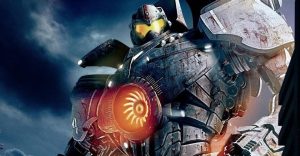The Mandalorian Makes Legends’ Versions Of Dark Troopers Official Canon

The Mandalorian season 2 finale, “Chapter 16: The Rescue,” showcased the full capabilities of the Imperial Dark Troopers after two brief previous appearances, and brought the Star Wars Legends versions of them more fully into canon. In addition to showing their offensive and defensive abilities, the finale also provided exposition for the history of the Dark Troopers under Moff Gideon’s command. For those familiar with the Expanded Universe (now Legends), the Dark Troopers in The Mandalorian are similar to a Dark Trooper type seen in the video games Dark Forces and Empire at War: Forces of Corruption. The canon and Legends versions of these Dark Troopers have a lot in common, but there are notable differences between the two.
In canon, the Dark Trooper Program was an Imperial project that produced two generations of experimental combat suits for the Empire’s military personnel. The Phase II Dark Trooper, seen in the canon video game Star Wars: Commander, was far more durable than the standard Stormtrooper, and was equipped with both a wrist-mounted heavy blaster cannon and a shoulder-mounted ordnance launcher. As explained by Doctor Pershing, the Dark Troopers in The Mandalorian are the third generation, and unlike their predecessors, they are droids, rather than combat suits. Pershing explains that the human pilot was considered the “weakness” of the previous iterations, and thus was eschewed from the latest model.
In Legends, the Dark Trooper Project was the magnum opus of Imperial General Rom Mohc, a non-clone veteran of the Clone Wars who was obsessed with improving upon the CIS droids he fought against. The Legends Dark Trooper line had three primary models and at least thirteen secondary variations. The primary Dark Trooper phases are all battle droids, but the Phase III Dark Trooper can also be used as a suit of armor. Rom Mohc himself used the Phase III Dark Trooper as armor in a battle against the Rebel spy (and former Stormtrooper) Kyle Katarn, resulting in the death of the Imperial General.

Both versions of the Phase III Dark Trooper are equipped with jetpacks, allowing for rapid deployment and retreats, enhanced strength, and durable armor plating. The canon Dark Troopers’ armored plating was impervious to nearly all of Din Djarin’s attacks, from his blaster to his wrist-mounted flamethrower and “whistling bird” explosives. Beskar proves to be tougher than the canon Dark Trooper’s armor, however, as Din’s helmet survived several brutal punches without any damage. Din was able to finally destroy a Dark Trooper with his beskar staff. Kyle Katarn similarly struggled against Rom Mohc’s durable Phase III Dark Trooper suit, but ultimately defeated the General.
The key difference between the third generation Dark Troopers in canon and Legends is that the canon version is a droid, while its Legends counterpart is a droid that can be used as an armored suit. Moreover, the Legends Phase III is far more heavily armed than the canon version. Gideon’s Dark Troopers are only armed with a blaster rifle (which appears to be either an E-11 or a similar model). The Legends Phase III has blasters built into its wrists and anti-vehicle rockets that fire from its shoulders. Phase III’s also come equipped with a gargantuan blaster cannon and various types of grenades.
The armor of the two Dark Troopers differs as well. In Legends, the Dark Trooper is made of the expensive phrik metal. Phrik is impervious to blaster bolts and even lightsaber blades, so it’s not made explicitly clear how Kyle Katarn was able to defeat Rom Mohc (the final boss of Dark Forces). Katarn may have fired on the few unarmored sections of the armor, eventually destroying it from the inside. In The Mandalorian, it’s unknown what material the Dark Troopers’ armor is made of, but it is not lightsaber-resistant, as shown when Luke Skywalker effortlessly destroyed Gideon’s entire unit.
About The Author
















